Navigating the features of an Android device can sometimes require advanced steps, especially when addressing system issues or making significant changes. One crucial feature for such tasks is Android recovery mode, which facilitates various maintenance and update processes.
You need to access this mode for several reasons. Whether it’s performing a factory reset to refresh the device before a sale, or installing crucial system updates through ZIP files, recovery mode provides the necessary tools. It also allows customization of the operating system through the installation of custom ROMs.
Understanding how to enter and exit this mode on different Android devices empowers you to manage your devices more effectively and ensure they operate smoothly.
So let’s find out!
Part 1: What Is Android Recovery Mode?
Android recovery mode is a special bootable partition that exists on most Android devices. This mode is essential for troubleshooting and managing various device issues through a series of options that are universally beneficial yet vary slightly depending on the device.

Check out the Android Recovery Mode options explained below:
Reboot System Now
This option is ideal for when you’re ready to exit the recovery menu and resume normal usage of your Android device. Selecting this will restart your device normally, bringing you right back to your lock screen without delay.
Reboot to Bootloader
If your initial entry into Recovery Mode started via the bootloader, you might find yourself using this option again to prepare for advanced operations, such as unlocking the bootloader or implementing Fastboot commands.
Enter Fastboot
Selecting this option brings up the fastboot menu, crucial for installing custom firmware or ROMs even without a custom recovery environment. It’s a specialized feature primarily used during system image installations via the bootloader.
Apply Update from ADB
For users whose device manufacturers provide firmware updates for manual download, this option allows for updates to be installed directly from a PC using ADB commands.
Apply Update from SD Card
This function works similarly to the ADB update option but uses files stored directly on your device’s SD card.
Wipe Data/Factory Reset
Performs a complete factory reset, erasing all data and returning the device to its original settings. It’s particularly useful if your device fails to boot or behaves erratically.
Wipe Cache Partition
This option may appear on devices like the Samsung Galaxy, allowing users to clear all system cache at once addressing performance issues caused by residual files from numerous installed apps.
Mount/system
Advanced users can mount the device’s system files to view or modify them. This should be done with caution as improper changes can affect device functionality.
View Recovery Logs
If you spend time tweaking settings in recovery mode, this option lets you view detailed logs of your activities, which can help track changes or troubleshoot issues.
Run Graphics Test
This quick test checks the integrity of your device’s graphical capabilities within the recovery mode, ensuring everything is functioning as expected without altering any data.
Run Locale Test
An extension of the graphics test, this checks your device’s ability to display various languages, showing different default messages in multiple languages.
Power Off
For those times when you’re finished with your device and don’t need it to remain on, this option completely powers it down.
Repair Apps
Found on many Samsung devices, this feature optimizes your apps as though the device has just been updated. This can enhance app performance and resolve existing issues, potentially restoring apps to optimal condition.
Part 2: How to Enter Android Recovery Mode?
Now that you have got the Android recovery screen and its options, let’s see how to enter your device in recovery mode according to different brands.
- 2.1 On Samsung Galaxy Phones
- 2.2 On Realme/OPPO Phones
- 2.3 On Xiaomi/Redmi Phones
- 2.4 On Infinix Phones
- 2.5 On Huawei Phones
- 2.6 On LG Phones
- 2.7 On Vivo Phones
2.1 On Samsung Galaxy Phones
Here’s how to boot a Samsung Galaxy phone into Recovery Mode.
- Turn off your Samsung Galaxy device and connect it to a computer using a USB cable.
- Immediately press and hold the Volume Up and Power buttons simultaneously until the Samsung Galaxy logo appears on the screen, then release both buttons and wait for the device to boot into Recovery Mode.
Samsung Devices with Volume and Power/Bixby Keys
- Turn off your phone.
- Simultaneously press and hold the Volume Up and Power buttons for 5 seconds.
Samsung Phones with Power, Bixby, and Volume Keys
- Power off your Samsung Galaxy device.
- Press and hold the Volume Up, Bixby, and Power buttons at the same time for about 5 seconds.
- Continue to hold the buttons until the recovery menu is displayed.
Samsung Devices with Power and Volume Keys
- Switch off your device.
- Hold down the Volume Up and Power keys together for approximately 5 seconds.
2.2 On Realme/OPPO Phones
When your Realme/OPPO phone encounters issues such as failing to restart, switch off, update the system, or wipe data, you can address these problems using Recovery Mode. Here’s how to enter Recovery Mode.
- Ensure that your phone is completely turned off.
- Press and hold the Power + Volume Down buttons simultaneously. Continue holding these buttons until the phone boots into Recovery Mode.
2.3 On Xiaomi/Redmi Phones
To enter your Xiaomi/Redmi Android Recovery Mode, follow these simplified steps:
- Open the Settings app.
- Navigate to About phone and then select System update.
- Tap the three dots icon located in the upper right corner.
- Choose Reboot to recovery to initiate the process directly from the MIUI settings.
- Select Reboot now. This action will restart your Xiaomi phone.
- Wait for a few seconds, and your phone will automatically enter Recovery Mode.
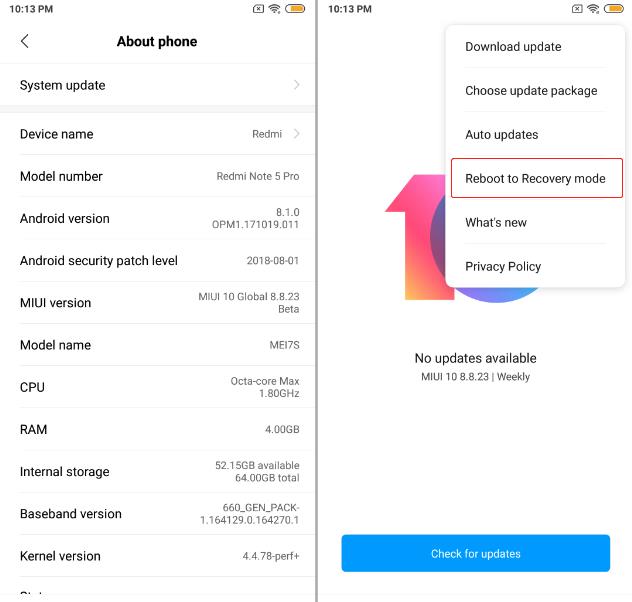
However, this method doesn’t work for all MIUI versions. If your Xiaomi/Redmi device is running MIUI 12 or later, you can enter MIUI Recovery with bottoms.
2.4 On Infinix Phones
To enter Android Recovery Mode on your Infinix device, follow these steps:
- Power off your device by holding the Power button until it shuts down.
- Press and hold both the Volume Up and Power buttons simultaneously for a few seconds.
- Release all buttons when the INFINIX logo appears on the screen.
- If the “No command” screen shows up, press and hold the Power button, then quickly press and release the Volume Up button.
- Now, you will the Android recovery mode interface.
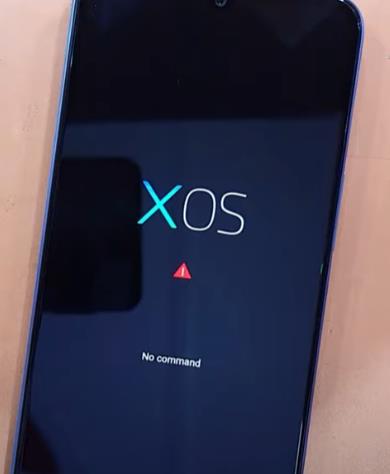
2.5 On Huawei Phones
To enter Recovery Mode on various Huawei phones, ensure the device is turned off and disconnected from any USB cables, and then follow these model-specific steps.
| Huawei Models | Recovery Mode Steps |
|---|---|
| Mate 40 series, Nova Y 70 series, Honor 30 Lite, Honor X10 Max, Honor Play4, Honor Play9A, and Honor X10 |
|
| HUAWEI MatePad Paper | Hold down both the Power + Volume up buttons until the HUAWEI logo appears. |
| Models without physical volume buttons | After the device vibrates, quickly press the power button five times to enter Recovery Mode. |
| Other models | Press and hold both the Power+ Volume Up buttons until the device vibrates, indicating entry into Recovery Mode. |
2.6 On LG Phones
To enter LG Android recovery mode, please follow the steps below.
- Power off your phone.
- Press and hold the Volume Down button together with the Power/Lock button located on the back of your phone.
- Continue holding these keys for about 10 seconds.
- Release both buttons once the System recovery screen appears on your display.
2.7 On Vivo Phones
Now if you are seeking your Vivo Android phone to enter recovery mode. Here are the steps.
- Hold the Power button on your Vivo phone for a few seconds to turn it off.
- Next, simultaneously press and hold the Volume Up + Power buttons for several seconds.
- Once the Fastboot Mode appears on the screen, release all buttons.
- Use the Volume Up button to navigate and select “Recovery Mode”.
- Confirm using the Power button.
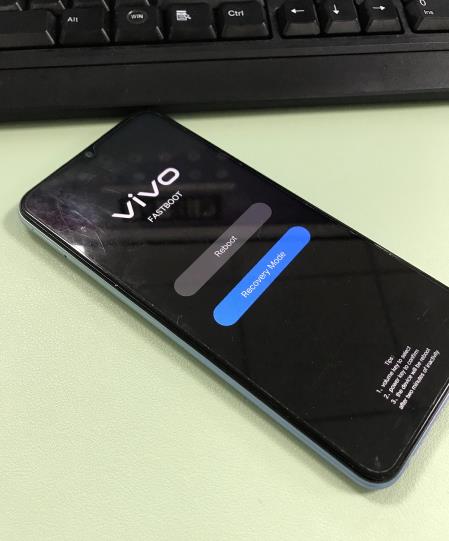
Part 3: How to Get Out of Android Recovery Mode?
Now you have the process of how to enter recovery mode but you should know how to get out of Android recovery mode too.
- To exit the Android recovery mode, use the available options i.e. Volume Up and Volume Down buttons.
- Locate and highlight the “Reboot system now” option if you wish to restart your device and return to normal operation.
Part 4: Stuck on Android Recovery Mode, How to Fix?
Occasionally, your Android device might refuse to exit Recovery Mode, leaving you unable to restart or shut it down normally.
This frustrating scenario necessitates quick solutions to regain access to your device and its data.
Here are a couple of straightforward fixes you can try to resolve this issue efficiently.
Fix 1: Check the Buttons on Your Android Device
A frequent culprit behind such issues is malfunctioning hardware buttons. Before proceeding with more complex solutions, verify that the physical buttons, especially the volume buttons, are functional and responsive.
If they function fine, proceed with the following fixes.
Fix 2: Force Restart Your Android Device
If checking the buttons doesn’t help, the next step is to force restart your Android device. Generally, you can do this by simultaneously pressing and holding the Power button and the Volume Up button for around 20 seconds until the screen turns off, signaling that the device has been powered down.
Afterward, try turning your device back on to see if it functions normally.
Fix 3: Exit Android Recovery Mode via ADB Command
If your Android device is stuck in Recovery Mode and you want to know how to exit recovery mode without the Power button, you can use the Android Debug Bridge (ADB) tool to exit the Android recovery screen.
First, ensure that the ADB tool is installed on your Windows PC. Then, connect your Android device via USB and open the ADB command line.
- In the ADB folder, press Shift + right-click to open a command window.
- Type “adb devices” to check device connectivity.
- If listed, type “adb reboot” to restart your device normally.
To exit Android recovery mode via ADB command, you need to enable the USB debugging option on your Android device beforehand.
Useful Tip: How to Unlock Android Phone without Password?
Locked out of your Android phone? Want to swiftly restore access to your device without a password, keeping your data safe and intact?
Try FonesGo Android Unlocker – professional unlocking software for anyone struggling with a locked Android device that provides a reliable solution for removing screen locks and bypassing Factory Reset Protection (FRP) from a wide array of Android devices.
- Seamless removal of screen lock passwords from Android devices
- One-click password removal from Samsung phones running Android OS 12
- Unlock early Samsung phone models without data loss
- Bypass FRP on Samsung, Xiaomi, Redmi, Vivo, OPPO, and Motorola devices
- Supports 6000+ popular Android brands and phone models
To unlock your Android device without a password, follow these steps:
- Step 1 Install FonesGo Android Unlocker on your computer. Launch the program and select “Remove Screen Locks,” then “Unlock Screen Lock”.
- Step 2 Connect your Android device via USB and click “Start” to initiate. Choose your phone brand from the list of supported brands.
- Step 3 Follow the instructions to enter Recovery Mode, guided specifically for your phone model. Once in Recovery Mode, follow the on-screen steps to remove the screen lock.
- Step 4 All kinds of screen locks on your Android device will be removed completely, and your device will reboot, free from password.
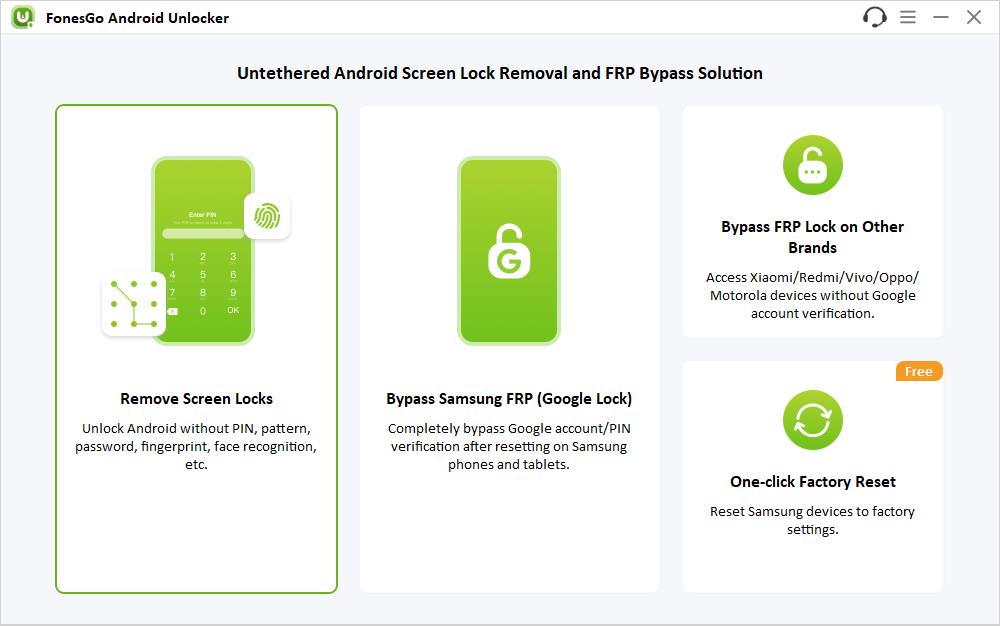
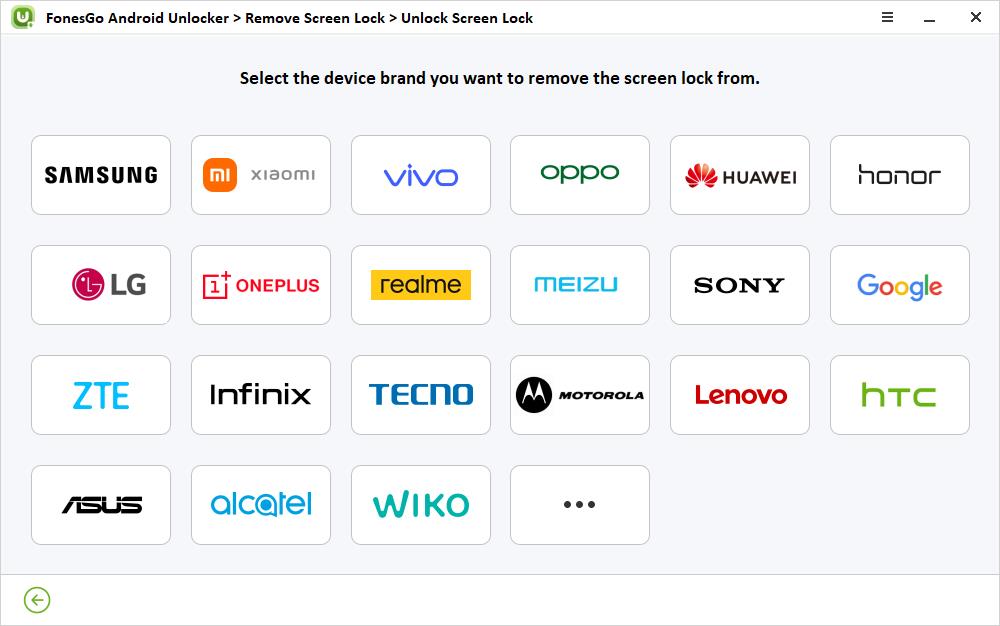
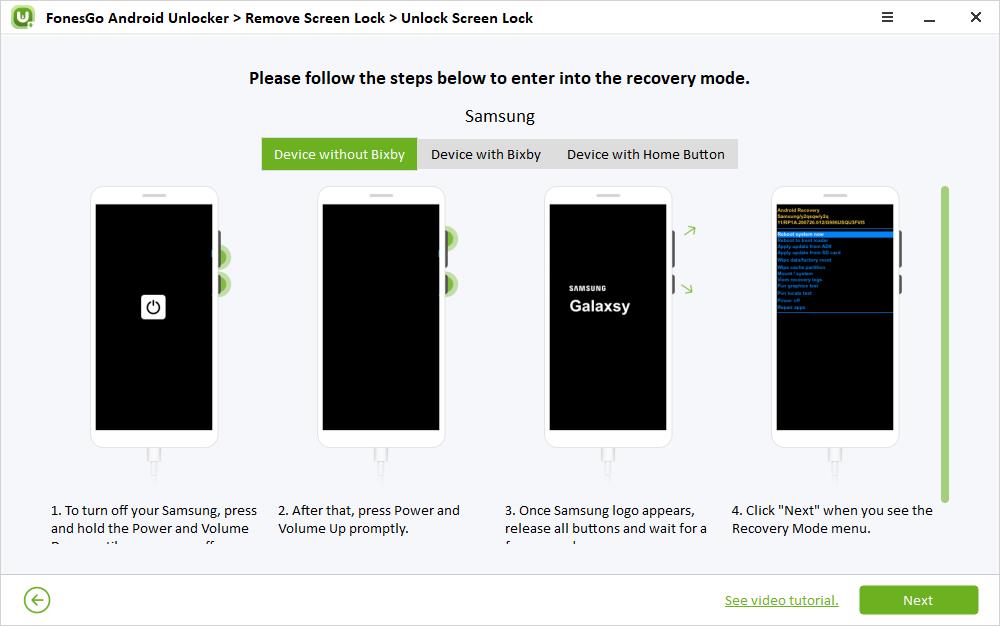
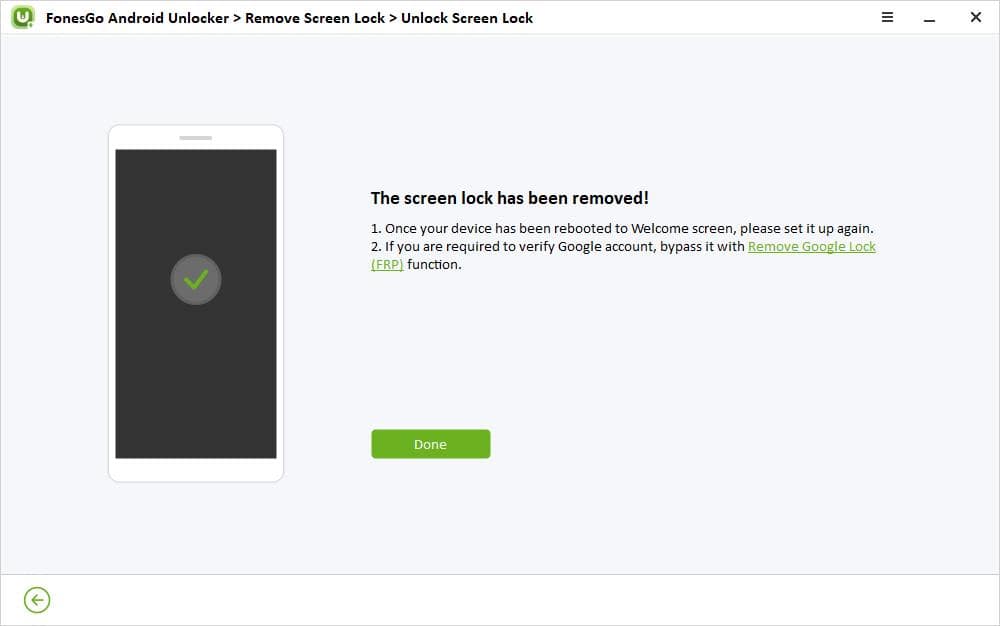
The Bottom Line
In conclusion, navigating Android recovery mode varies by device but remains a vital skill for managing your Android’s system settings. Whether you’re entering recovery mode, exiting it, or troubleshooting a stuck device, understanding these processes ensures optimal device performance.
Additionally, for those facing locked screens, FonesGo Android Unlocker offers a reliable method to bypass screen locks and passwords effortlessly.
Armed with these tips, you’re well-equipped to handle almost any issue related to Android recovery mode.

